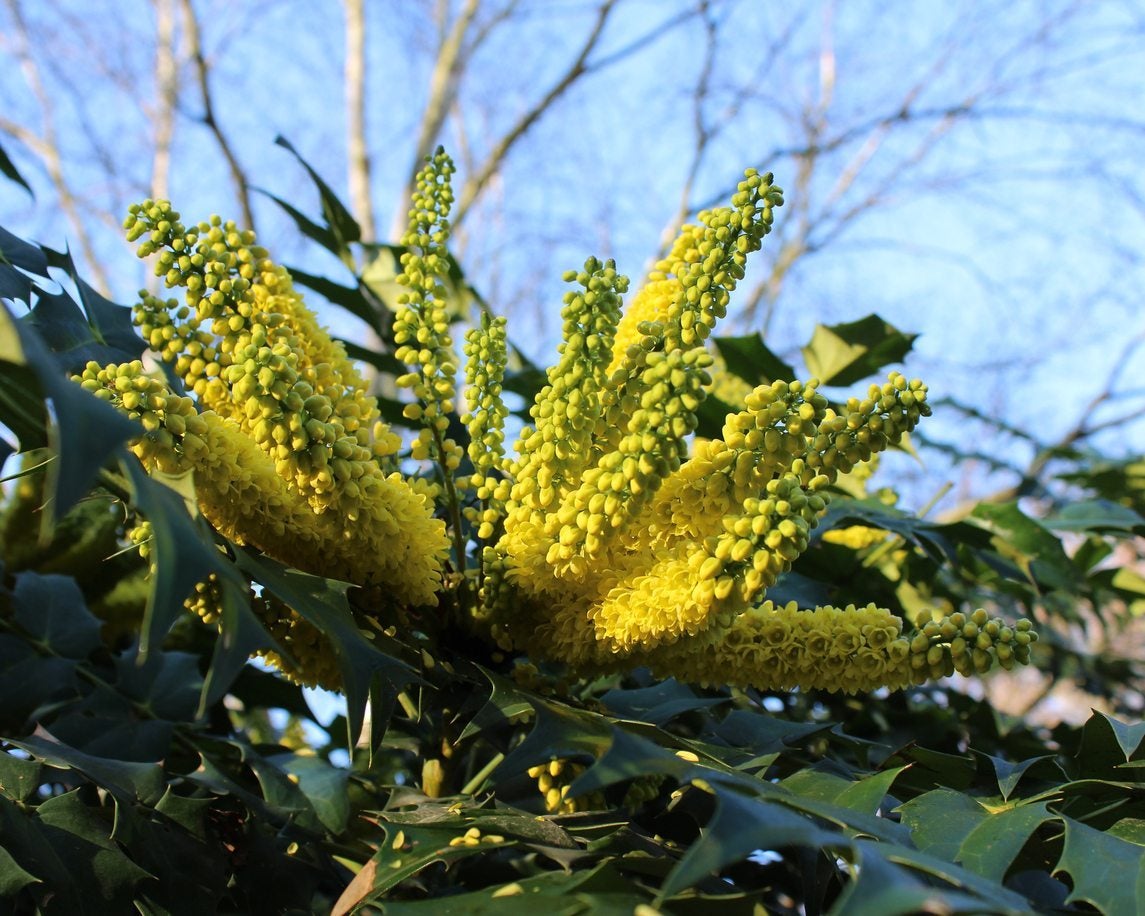Mahonia Info: Learn How To Grow A Leatherleaf Mahonia Plant
Leatherleaf mahonia adds whimsey to a garden with its long upright shoots of yellow flowers that resemble something from Dr. Seuss.


Leatherleaf Mahonia In Gardens - Tips For Growing Leatherleaf Mahonia Plants
When you want unique shrubs with a certain type of whimsy, consider leatherleaf mahonia plants. With long, upright shoots of yellow clustered flowers that extend out like octopus legs, growing leatherleaf mahonia makes you feel you have stepped into a Dr. Seuss book.
This is a low-maintenance plant, so leatherleaf mahonia care is minimal. For additional information and tips on how to grow a leatherleaf mahonia shrub, read on.
Mahonia Information
Leatherleaf mahonias (Mahonia bealei) won’t resemble any other plants in your garden. They are small shrubs with sprays of dusty green leaves in curiously horizontal layers. The leaves look like holly plant leaves and are a bit spiny, like those of their relations, barberry shrubs. In fact, like barberries, they can make an effective defensive hedge if planted correctly.
These plants bloom in winter or early spring, filling their branches with shoots of fragrant, butter-yellow blossom clusters. By summer the flowers develop into little round fruits, a surprising bright blue. They hang like grapes and attract all of the neighborhood birds.
Before you start growing leatherleaf mahonia, take into account that these shrubs can get 8 feet (2 m.) tall. They thrive in USDA plant hardiness zones 7 through 9, where they are evergreen, retaining their leaves all year.
How to Grow a Leatherleaf Mahonia
Leatherleaf mahonia plants aren’t particularly fussy to grow and you’ll also find leatherleaf mahonia care a snap if the shrubs are installed in the right place.
Where to plant
Sign up for the Gardening Know How newsletter today and receive a free copy of our e-book "How to Grow Delicious Tomatoes".
They appreciate shade and prefer a location with partial or full shade. Offer the shrubs wind protection as well, or else plant them in a wooded setting.
Soil requirements
Plant leatherleaf mahonia plants in acidic soil that is moist and well drained.
Water requirements
Provide leatherleaf mahonia with ample irrigation after planting.
Once they're installed and have begun growing, you’ll need to give the leatherleaf mahonia plant ample water until its roots are established.
Drought tolerance
After a year or so, the shrubs have a strong root system and are drought tolerant.
Pruning
Create a denser shrub by pruning back the tallest stems in early spring to encourage new growth at the base.

Teo Spengler is a master gardener and a docent at the San Francisco Botanical Garden, where she hosts public tours. She has studied horticulture and written about nature, trees, plants, and gardening for more than two decades, following a career as an attorney and legal writer. Her extended family includes some 30 houseplants and hundreds of outdoor plants, including 250 trees, which are her main passion. Spengler currently splits her life between San Francisco and the French Basque Country, though she was raised in Alaska, giving her experience of gardening in a range of climates.